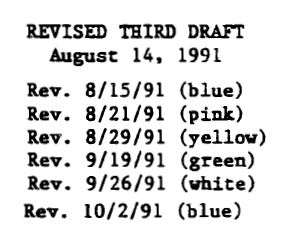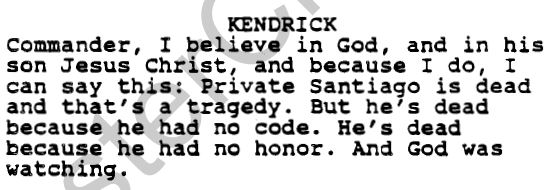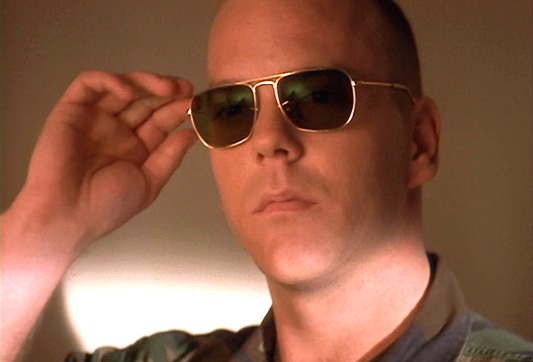
I read a film last night.
I know what you are thinking – and yes, I watched it too. In fact I did both. At the same time. And it was quite an eye opener.
The film was A Few Good Men – which of course features an absolutely brilliant performance by Jack Nicholson. A fine Keifer Sutherland performance too. Not to mention Kevin Bacon. And a young Tom Cruise doesn’t do too badly either.
The reason I watched it was none of the above – it was all about the writing.The film was written by the great Aaron Sorkin, based on his play. For those who haven’t seen it, it’s based around the death of a marine at the US base in Cuba – and deals with themes of right and wrong and duty and justice. I’m a huge Sorkin fan, and am currently doing on online masterclass with him. As part of that, I got a copy of the screenplay for A Few Good Men. So last night I sat down with the script on my laptop, the DVD on my TV – and of course a notebook and pen.

The first thing that struck me about the script wasn’t just that it seemed to have been written on a typewriter – it was 1991 after all. On the cover I saw this was the third draft of the screenplay – and this third draft had been through 6 revisions. As the film progressed, there were other places where the film deviated from the script – with changes obviously made during production and during editing.
It was a great comfort to me that such a brilliant writer fiddles and revises as much as I do. In fact, in his course, Sorkin said – revisions are not an indication of bad writing, revisions are an indication of a good writer. I couldn’t agree more. Revisions are a sign of the writer’s desire to make their work the very best it can be.
Back to the film / screenplay. Sorkin is a master of dialogue and characters. In the final film of course you have the visuals to help, but it all starts with a screenplay. At that point, words define the character, just as they do in a novel. Here’s how Sorkin introduces the character played by Keifer Sutherland.
And here are two examples of Lt. Kendrick’s dialogue.


Kiefer Sutherland did a fabulous job in the role – but even without him – you know everything you need to know about the character from just those few paragraphs…

In terms of dialogue, I found that the lead actors – Nicholson, Cruise, Demi Moore, Bacon etc – did change the text. Just slightly. A word or phrase here or there. But the secondary characters / actors pretty much stayed with the script. I guess that’s why the stars earn the big bucks. The changes they brought fitted seamlessly into the dialogue. They totally worked for the characters. That’s what the great actors bring to the table.
And once again – it was dialogue creating character. And character driving plot. Here’s one of Jack Nicholson’s most memorable lines…

What does that tell us – that he’s arrogant and powerful. And a bully. It also tells us he enjoys the danger and would enjoy a fight. Not a nice man. Of course, in the film, Nicholson’s delivery adds greater depth, but not much. The depth is already there. The words determine the way they were delivered. There was no other way it could have been done.
A Few Good Men was nominated for a number of awards – which it didn’t win. Sorkin has of course gone on to win many, many awards for his writing. I haven’t finished the course with him yet. Last night’s exercise really got me thinking – I wonder what’s next.
